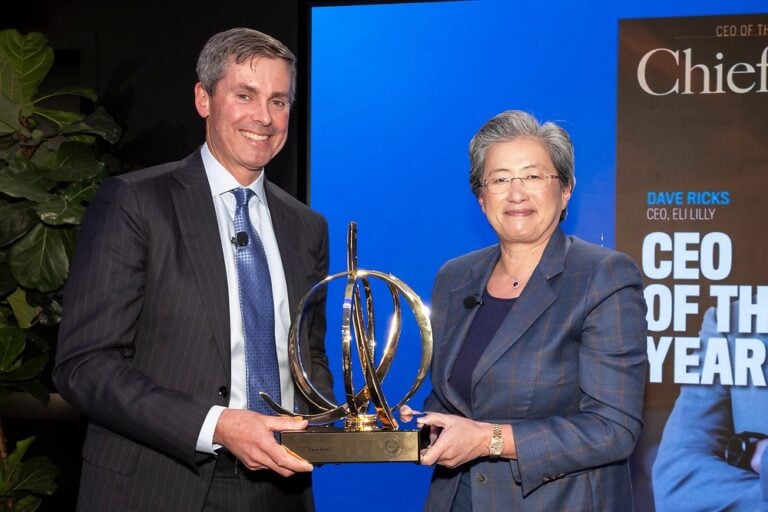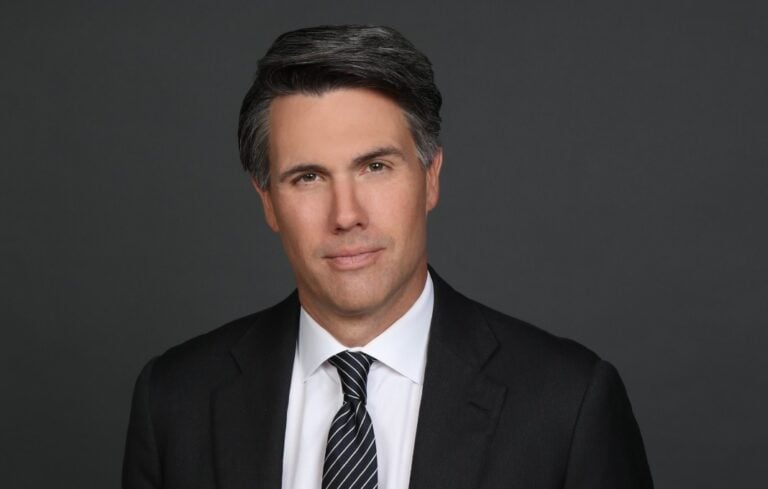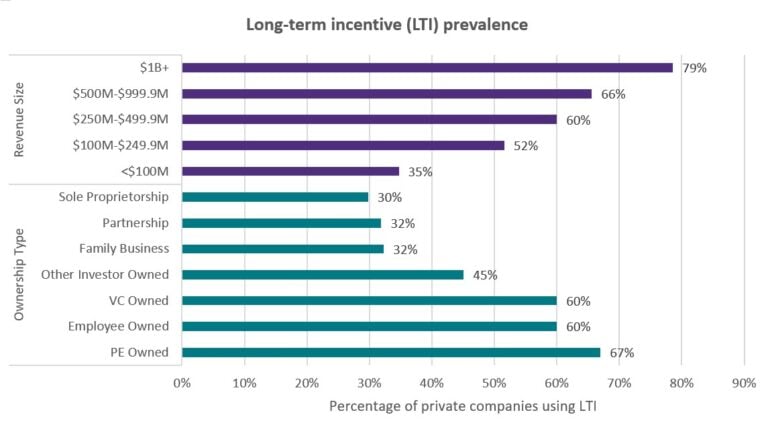
For the first time in half a century, the future home of innovation is up for grabs. The geography of American industry is upside down. Traditional capitals of the vast swath of the nation’s heartland, like Indianapolis, Detroit, Columbus and Des Moines, have become hot hubs for tech workers, as millennial talent flees the high-cost coasts. Meanwhile, traditional information enclaves like New York and California are rediscovering their passion for manufacturing.
Wherever a company is based, it needs a solid infrastructure to thrive in an increasingly technological and talent-driven economy. But infrastructure means far more than roads and rails, noted David Roberts, CIO of the State of Indiana, at a roundtable sponsored by the Indiana Economic Development Corp. “We think about the ethereal, as well. What are the ideas driving economic development in our state? Where does the money come from for resources? What about the people piece, the culture piece? And how can we influence that?” asked Roberts, who added that the state takes a hands-off approach when it comes to individual companies’ organizational structures. “We want to enable the winners to win, not pick winners and losers in our state.”
One of those winners, ClearObject, is the fastest-growing IT company in Indiana. It works with companies across the Midwest to develop Internet of Things (IoT) solutions for existing products, which are often ordinary items that have been around for decades, from kitchen appliances to table lamps to car radios.
“What’s happening is that everyday devices are getting smarts built into them, and they’re connecting and sending data— data we can use to understand how that device is being used,” explained ClearObject CEO John McDonald.
As an example, McDonald recalled being approached by the CEO of a small manufacturer that had recently been awarded a 10-year contract to provide gas stove igniters to appliance maker Electrolux. The catch? Electrolux wanted the manufacturer to put something in the igniter that would talk to the circuit board and help to predict when the igniter would fail.
“Because ultimately, what Electrolux wants to do is one day, the doorbell will ring, and there will be a man with a box. Inside will be an igniter because your stove called and said it needs a new one,” said McDonald. “This is happening all over the world now, ordinary devices becoming smart.”
IoT is boosting flagging industries that had previously relied heavily on human sweat, such as farming. Driverless tractors, robotic dairies, drones to spray and monitor crops—all are being implemented to phase humans out of the agricultural process. “There are fewer folks out there who want to work as hard as you have to in order to run a farm, so we’re seeing this technology continue to be used,” said Peery Heldreth, CEO of Farm Credit of the Virginias.
“For us on the lending side, that means that our clientele will demand more from us in how they want their services when it comes to use of the technology.”
But IoT is only one of the disruptive forces companies must grapple with today, said Larry Walsh, CEO of The 2112 Group. “It’s the cloud, it’s mobility, it’s automation, it’s Big Data, it’s artificial intelligence. You have to put all these together,” he said. “But if you think that IoT is not applicable to you, then you’re just going to watch the world pass you by. It’s not a matter of, ‘Is this going to touch you?’ It’s ‘When is it going to touch you? And to what degree?’”
“Even when IoT tools are made available to consumers, adoption often still lags innovation.”
Size Matters
For some companies, though, size can be a barrier to adoption, even when the CEO recognizes the importance of the innovation. Pureflow, which designs and builds water purification systems, already has invested in technology to monitor its mobile water filtration trailers, collect data and use that data for limited reporting.
“Now we need the ability to have a really robust system in place that is easier to set up from the start and easier for our customers, who are large companies, to log in and see their data and get reports that predict when the system will need to be cleaned, for example,” said David Ferguson, CIO of Pureflow. “We know we need to be there, but we’re a relatively small company, so we don’t have that in-house.”
Even when IoT tools are made available to consumers, adoption often still lags innovation.
Take autonomous parking, for example, said Lior Arussy, CEO of Strativity. “Anybody want to guess the level of utilization of that feature, which is already in cars today? It’s 1 percent. We are selling tools to customers who get frustrated because they don’t understand the technology,” he said. “We need to integrate it with some kind of human strategy to get the majority of people not to be afraid of it. That’s the missing part.”
“I would have said less than 1 percent,” said Vlad Shmunis, CEO of VoIP company RingCentral, which has 350,000 businesses on its cloud-based system. “If we look at all our features, the vast majority have limited utilization.” On the flip side, he added, when a feature is removed, a vocal minority of customers are disappointed. “One thing we have going for us is that we have a lot of customers, and they are very vocal. So, we listen, and we try to react.”
The easiest technology for consumers to adopt is the kind they don’t have to understand because the technology is thinking for them, said Moreton Binn, CEO of Spa Here.
“Pittsburgh’s airport is installing a system where when you walk in, your phone will ring and ask if you want to check in,” he said. Once you respond, the system knows where you are and knows the route you will take to your gate. “[It starts] to tell [you] everything that’s available—where to drink, eat, shop.” For Binn’s company, which offers express massages to airport travelers, that could be a big boon to business.
Other companies will use IoT to make their operations more efficient and safer. Many of the 4,000 employees at Lewis Tree Service work in bucket trucks near dangerous, high-voltage power lines, sometimes in inclement weather. “I don’t need self-parking on my car, but the concept of parking a bucket truck in the proper orientation to something that could get them into trouble, that is fascinating to us,” said Gregory Reitz, Lewis’s vice president of IT.
Invasion of Privacy
While IoT can help companies work better or offer products or services to customers before they even know they need them, that same technology raises privacy concerns that slow adoption. ClearObject’s McDonald offered the example of a car radio that contains software that can detect subtle changes in driving patterns and knows when you’re not keeping to your lane as effectively as you were an hour ago.
“It knows that it’s 3 a.m., and you might be tired. It also knows that two exits up is a 24-hour Starbucks. So, on the car radio screen, up pops a message, ‘Would you like a chai latte?’” McDonald said. “I can tell you with great confidence that most cars that come off the product line today have the ability to do just that. So, why doesn’t your car order your coffee? Because you don’t want it to. Because, who else do you not want to know [that] you’re weaving in your lane at 3 in the morning?”
What customers really want is control over who has access to that data. Since they don’t have control, “instead, they just shut it off,” said McDonald. The other thing holding back adoption is security, although some of those fears are unfounded. McDonald offered the example of using a credit card online versus in person at a restaurant.
“Humans don’t trust computers, at least not yet. In that moment with the waiter, even though it’s fleeting and simple, you’ve created an interpersonal bond between you,” he said. Yet, Amazon is actually the more secure method of payment by far. “There are technologies we can put in place to deal with real security issues, but it’s very difficult to put technologies in place to deal with perceived security issues.” Strativity’s Arussy pointed out, however, that many of the privacy concerns that have made consumers wary are real. Most don’t understand the rights they are waiving when they sign terms and conditions forms online.
“We all rush to click ‘yes’ to everything, but then the moment that data is created, you really have no control over it,” he said. “So the issue starts earlier, with a marketing education for consumers.” And it may eventually take regulation to solve the problem, he added, with Europe leading that charge.
The group agreed that the generational divide in how people use technology is a challenge. Older consumers often favor privacy over convenience, and younger Internet users are more open to sharing their data, perhaps without understanding the potential risks. Giving people more information about what companies are doing with their data will likely be crucial in the years to come.
“Wouldn’t that be the real innovation?” asked Cabot Earle, CEO of Microbac Laboratories. “Not to access all this information and spam people and do all the things that drive us bonkers—but to actually do it with integrity and respect.” Blockchain technology may be one answer to that dilemma, said Pureflow’s Ferguson. Blockchain is essentially a publicly auditable, digital ledger of every step that a cryptocurrency, like Bitcoin, takes. “Applying that concept to data streams and data packets could be very useful,” he said. “That’s a way you can give customers control over where their data streams are going and even potentially ascribe value to it as it transfers.”
The problem, he noted, is that it’s still all theoretical. Implementation will require regulation—or for companies to see it as a competitive differentiator, he said.
“Those companies that do offer it are likely to grab market share over those [that] don’t,” Ferguson said, adding that, in all likelihood, the solution would have to include both carrots and sticks—regulatory penalties and the potential for customer acquisition.
But Sri Navalpakkam, managing partner at The Ascend, disagreed with regulation being an answer. “This is 2018. The problem of Big Brother, of privacy, that’s a given. You’re not going to solve that,” he said. The successful companies he works with are using these tools only to know their customers more intimately and to serve them better. The rest—i.e., the hundreds of spam emails we get each day—is noise. “Regulation is counter-intuitive to innovation. You can’t regulate your way to greatness, right? You’ve just got to innovate and create more market value.”




0

1:00 - 5:00 pm
Over 70% of Executives Surveyed Agree: Many Strategic Planning Efforts Lack Systematic Approach Tips for Enhancing Your Strategic Planning Process
Executives expressed frustration with their current strategic planning process. Issues include:
Steve Rutan and Denise Harrison have put together an afternoon workshop that will provide the tools you need to address these concerns. They have worked with hundreds of executives to develop a systematic approach that will enable your team to make better decisions during strategic planning. Steve and Denise will walk you through exercises for prioritizing your lists and steps that will reset and reinvigorate your process. This will be a hands-on workshop that will enable you to think about your business as you use the tools that are being presented. If you are ready for a Strategic Planning tune-up, select this workshop in your registration form. The additional fee of $695 will be added to your total.

2:00 - 5:00 pm
Female leaders face the same issues all leaders do, but they often face additional challenges too. In this peer session, we will facilitate a discussion of best practices and how to overcome common barriers to help women leaders be more effective within and outside their organizations.
Limited space available.

10:30 - 5:00 pm
General’s Retreat at Hermitage Golf Course
Sponsored by UBS
General’s Retreat, built in 1986 with architect Gary Roger Baird, has been voted the “Best Golf Course in Nashville” and is a “must play” when visiting the Nashville, Tennessee area. With the beautiful setting along the Cumberland River, golfers of all capabilities will thoroughly enjoy the golf, scenery and hospitality.
The golf outing fee includes transportation to and from the hotel, greens/cart fees, use of practice facilities, and boxed lunch. The bus will leave the hotel at 10:30 am for a noon shotgun start and return to the hotel after the cocktail reception following the completion of the round.